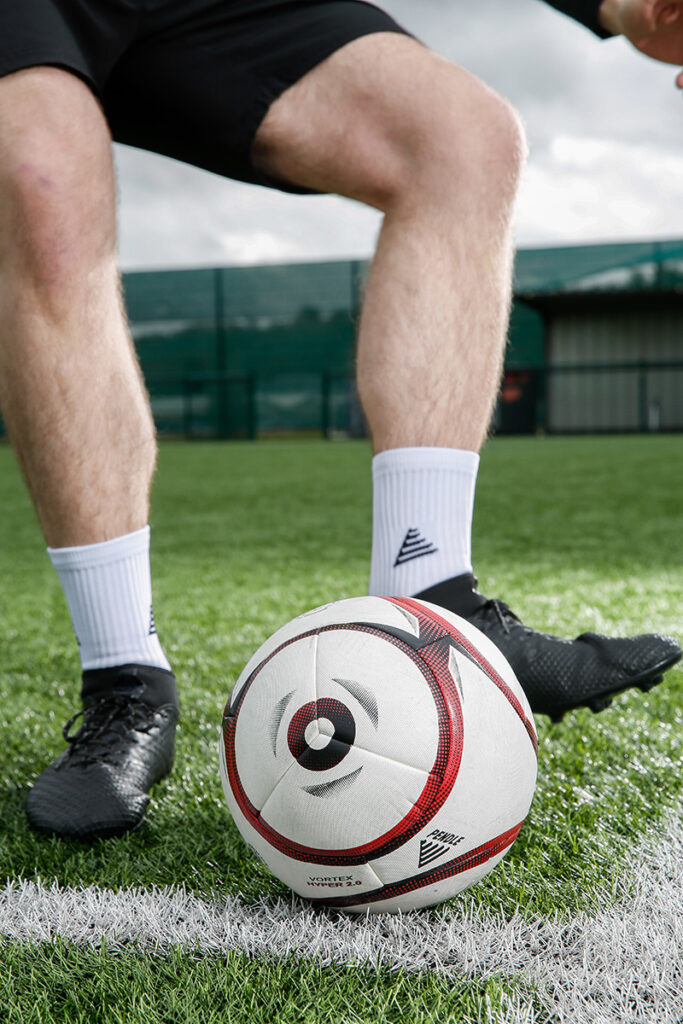Last Updated on: 7th January 2025, 01:21 pm
Ball Control Drills
Tips To Improve Ball Control
Ball control refers to a player’s ability to collect and gain control of the ball using all parts of the body, including feet, legs, chest, and head. Good ball control allows you to receive passes on the ground and out of the air with clean first touches. The faster you get control, the faster you can decide on your next step, whether you’re passing, dribbling, or shooting. A poor first touch can ruin the flow of your team’s attack and can result in you losing possession. This post will go into the ins and outs of ball control and offer suggestions for training drills to help improve it.
Types of Ball Control
There are multiple ways to control the ball but they’re not all consistently effective. Learning different methods of ball control means you have more options on the pitch. The main two types of control are:
- Cushion – positioning a part of the body in the ball’s path and pulling back the controlling surface on impact. This cushions the impact and causes the ball to drop at the feet.
- Wedge – you make an angle or wedge between the ground and the foot. When the controlling surface is rigid, you can wedge the ball between it and the ground.
Selecting which method to use comes down to judgement and experience. Base your decision on how the ball is travelling and how much time and space you have. The key to success on the pitch is ensuring you have enough confidence to receive and control the ball regardless of speed, direction, and flight.
The Basics of Good Ball Control
The basics of ball control are the same no matter which part of the body you are using. On a basic level, you should:
- Be quick – get in line with the ball’s flight and decide how to control it.
- Present the area of the body you want to control the ball with and get as large an area as possible behind it.
- As you make contact, relax the body part you’re using to cushion the ball.
- It will then drop to the ground so you can make your next move.
Just remember to stay on your toes, keep balanced, and focus on the ball. That way, you’ll be in a strong position to collect the ball.
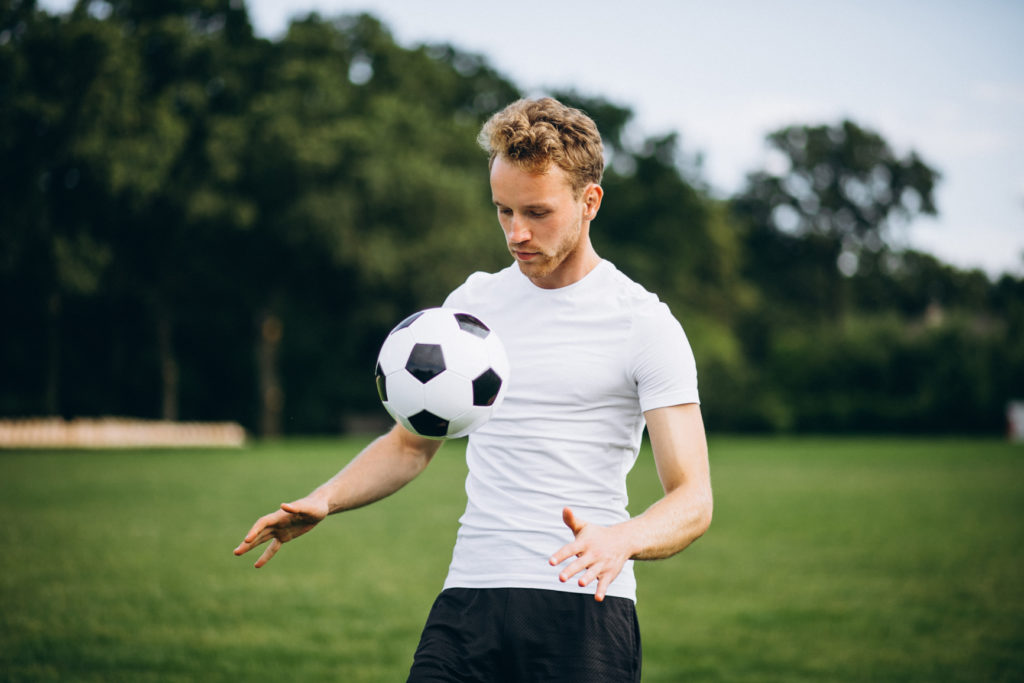 Tips For Better Ball Control
Tips For Better Ball Control
Practice makes perfect when it comes to football skills, so the more you think about ball control the more confident you’ll be. As you practice, there are certain things you can do to get stronger.
- Focus on different parts of the body so you feel comfortable controlling in multiple ways. Then you can receive the ball at any height.
- Move into position to intercept the ball early.
- Stay balanced using your arms.
- Watch the ball to judge its direction and speed.
- Keep your head steady
Keeping all of these things in mind will leave your players in a good position on the pitch.
Ball Control Training Drills
It’s important to spend time in training to practice controlling the ball using as many parts of the body as possible. There are plenty of drills that you can introduce to get your players thinking about ball control. The following are just a few possibilities.
Ball Juggling
Ball juggling is a great way for players to develop a feel for the ball. The constant touching helps build confidence, balance and finesse. It also encourages the use of different body parts to control the ball. This will give them more options on the pitch. Ball juggling is something that players can practice in their own time so it doesn’t take much time away from more formal training.
First Touch Control
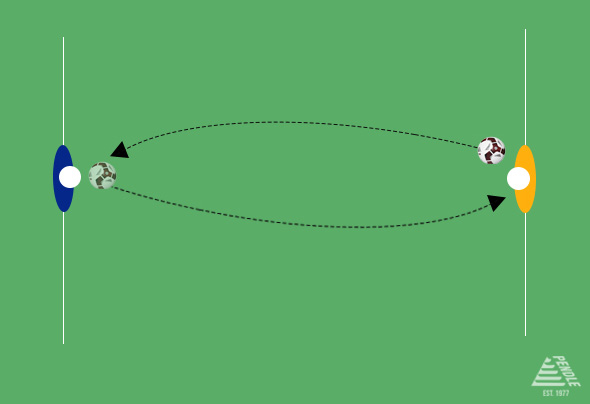
Equipment: One football for every pair
Set-Up: Divide players into pairs.
Instructions:
- Have Player 1 pass to Player 2 from different heights and angles.
- Player 2 should focus on controlling the ball with one touch, using different parts of their body.
- They pass the ball back to Player 1.
- Repeat for a specified amount of time.
Coaching Points:
- Their first touch should keep the ball close to set them up for their next move.
- Keep their eyes on the ball until they make contact.
- Ensure they position their body to cushion the ball and use soft touches to absorb its momentum.
Progression:
- Increase the pace of the passes.
- Use unpredictable passes.
- Add a defender to apply pressure.
Turning with the Ball
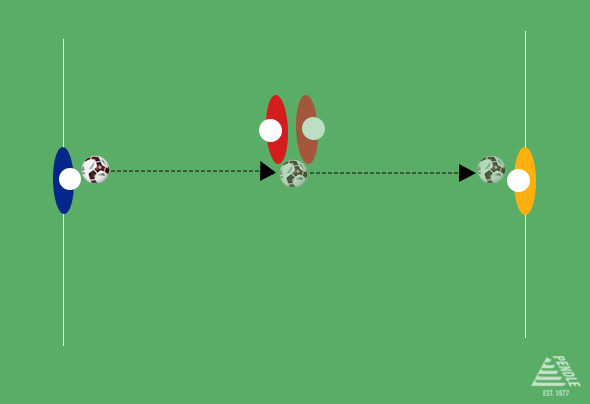
Equipment: One football per team of 3
Set-Up: Divide players into teams of 3. Have them stand in a line about 15ft apart.
Instructions:
- Player 1 passes to the player in the centre (Player 2).
- They control the ball, turn in one move, and pass to Player 3.
- Player 3 returns the pass and the steps are repeated.
Coaching Points:
- The proper way to turn with the ball is to turn sideways and offer a welcoming foot, cushion the ball on impact, let it “run on” and take it with the other foot.
Receiving the Ball Under Pressure
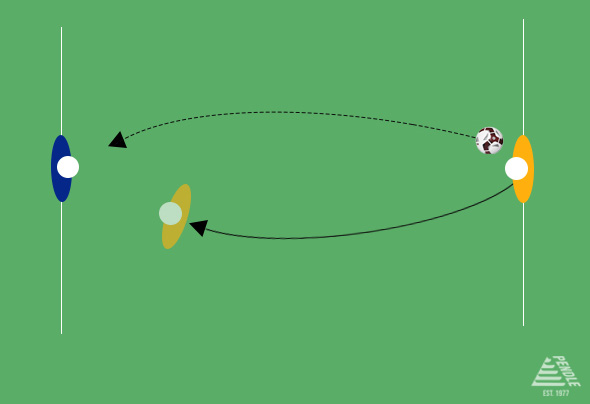
Equipment: One football per pair
Set-Up: Divide players into pairs, they stand 15ft apart
Instructions:
- Player 1 throws the ball underhand to Player 2.
- Player 1 then becomes the opponent and tries to take the ball from the Player 2.
- They must try to keep control for 5 to 10 seconds.
Coaching Points:
- Player 2 can make the control factor easier by moving the ball away from the incoming opponent.
- They can make the control factor more challenging by faking and disguising a dribbling move as the opponent rushes in.
Progression:
- The server waits until the receiver touches the ball before moving in.
- Use a variety of speeds and flights of the service.
- The server moves in while the ball is still in the air.
3 v 1 Circle
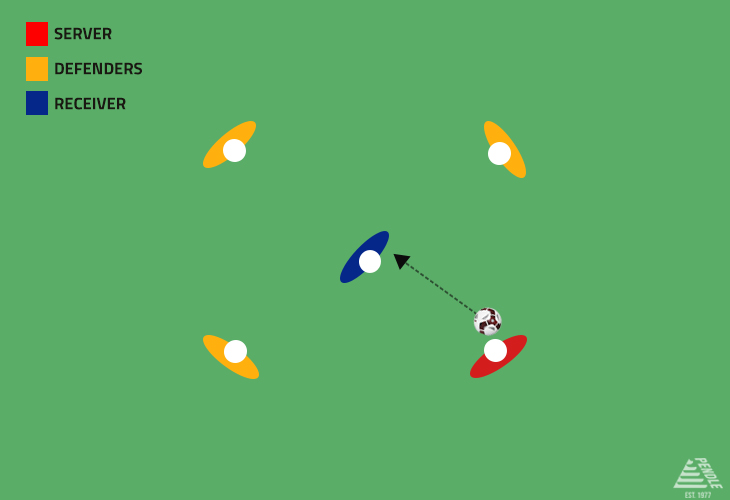
Equipment: One football for every group of 5
Set-Up: Divide players into 5: one receiver, one server, and three defenders. The defenders and server form a 15ft circle around the receiver.
Instructions:
- The server throws the ball underhand to the receiver.
- When the ball is thrown, the server selects a defender. The defender must tackle or put pressure on the receiver. The server can nominate more than one defender or elect to become a defender.
- The receiver gains the ball and tries to keep possession in the circle for a specific amount of time.
- The receiver could also gain control and break out of the circle by dribbling towards a target area/line.
Coaching Points:
- The receiver should always note the service’s trajectory and speed. They must move their feet accordingly to present the chosen controlling surface to the ball.
- Knowing the opponent’s position, movement and intention will influence how the player receives the ball.
- The receiver must make an early decision, commit to the move, and move quickly to the ball.
- The receiver should control the ball away from the opponent or shield the ball from him by getting his body between the ball and the opponent.
Progression:
- Picking certain players as the defender can make it easier or harder.
- The server can pick up to 3 defenders to try and take control of the ball.
- You can make things easier by allowing the server to help the receiver.
Throw-Control-Pass
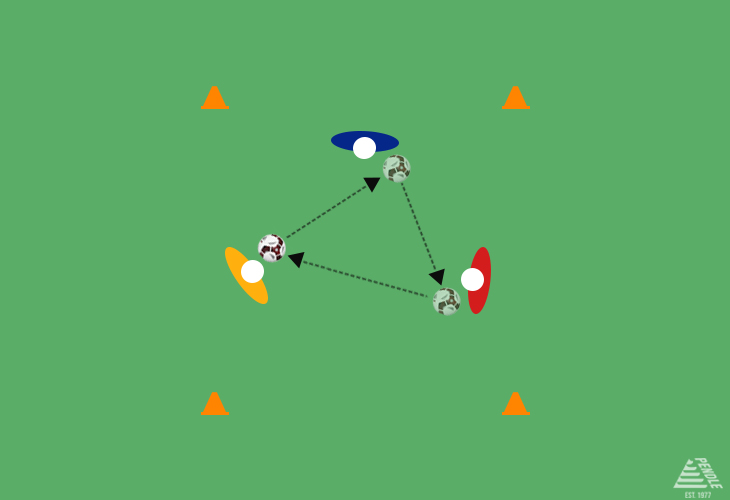
Equipment: One football for every group of 3 or four players. Football cones to outline the field
Set-Up: Divide players into groups of 3 (or 4). Mark up a mini-field of around 90ft x 60 ft (or 120ft x 90ft).
Instructions:
- Player 1 throws the ball to Player 2.
- They control the ball and pass to Player 3.
- Player 3 picks up the ball and throws it to Player 1 or 2.
- Keep following this sequence for a specified amount of time.
Coaching Points:
- The player who picks up the ball can run with it before throwing. This opens up the game by increasing space and time.
- The receiver must quickly decide the best way to control the ball.
Progression:
- Players use a variety of throws and a variety of control skills.
Controlling and Passing on the Move
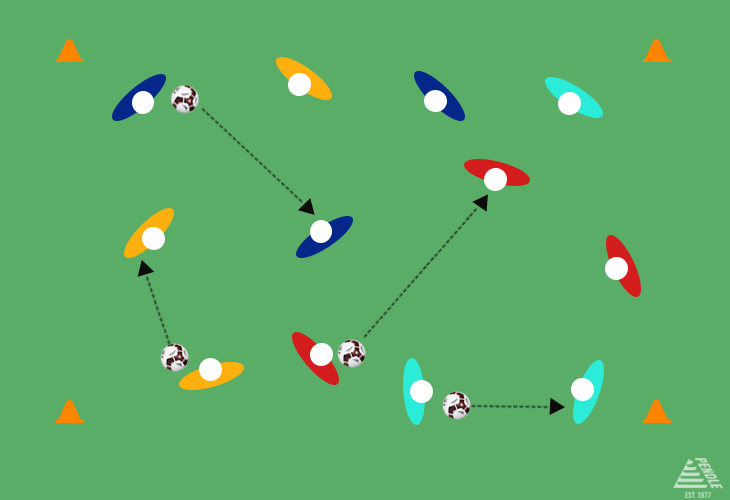
Equipment: Different coloured training bibs. Cones to outline the field. One football per group of 3.
Set-Up: Divide players into groups of 3. Then mark out the playing area. With 4 teams of 3, this should be 60ft x 90ft. With 6 teams of 3, it would be 90ft x 120ft.
Instructions:
- The player who has the ball passes it to a teammate before moving to a support position.
- The two players without the ball should always be looking for a position where they can receive passes.
- All teams play at the same time with their own ball.
Coaching Points:
- When not in possession of the ball, players should be in possession by moving into spaces created in and around the other players.
- Teams should spread out as much as possible.
- When moving into support positions, players should be aware of where other team members are.
- Players must quickly decide which body part to use to control the ball. With their first touch, they should move the ball into a position that allows them to pass to a teammate.
Progression:
- Get players to control and pass the ball with two touches.
- Make sure players receive the ball with various surfaces of the foot.
- Players receive the ball with one surface of their foot and pass with a different surface.
- Receive with one foot and pass with another.
- Expand the playing area and let players deliver aerial passes.
Training Equipment
Improving your first touch can elevate your game. So, incorporate these drills into your pre-season training and you’ll be ready to dominate on the pitch. You’ll develop better control and faster decision-making. Consistency is the key, so practice regularly. As you get better, keep increasing the difficulty to push yourself further.
Ready to take your training to the next level? Check out our latest range of training wear, footballs, and training equipment to support your journey.
Resources:
- Alan Hargreaves and Richard Bate, (2010) Skills and Strategies For Coaching Soccer, 2nd Edition, Human Kinetics

